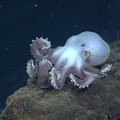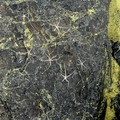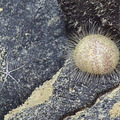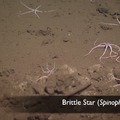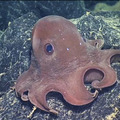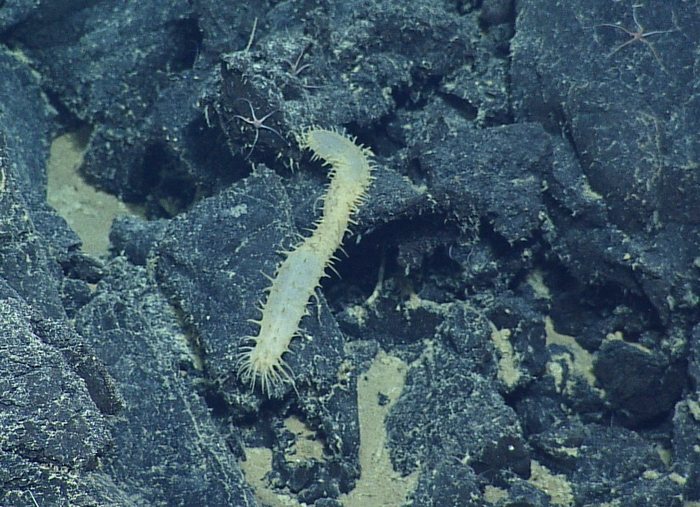Class Holothuria consists of the somewhat humorous Sea Cucumbers.
Deep Sea Cucumber (Pannychia moseleyi)
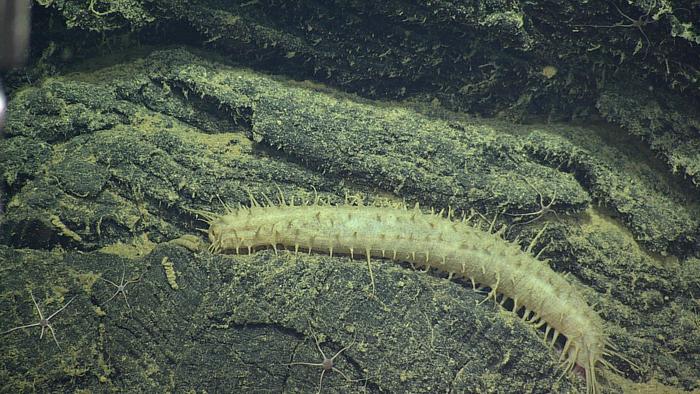 Probably the most common sea cucumber on Axial, sea cucumbers are often present in deep trenches and far below the ocean surface. The Pannychia moseleyi is often found near the eastern Pacific Ocean.
Probably the most common sea cucumber on Axial, sea cucumbers are often present in deep trenches and far below the ocean surface. The Pannychia moseleyi is often found near the eastern Pacific Ocean.
References:
http://www.mesa.edu.au/deep_sea/echinoderms.asp
http://www.gettyimages.com/detail/photo/sea-cucumber-feeding-tentacles-deep-sea-high-res-stock-photography/145094399
Peniagone Sea Cucumber (Peniagone sp.)
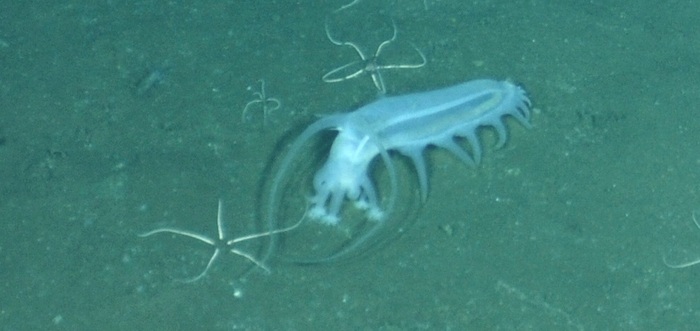 This small sea cucumber is abundant at the base of Axial Seamount, and many different species are common along the Mid-Atlantic Ridge. The cucumber uses undulating motion to swim from place to place.
This small sea cucumber is abundant at the base of Axial Seamount, and many different species are common along the Mid-Atlantic Ridge. The cucumber uses undulating motion to swim from place to place.
References:
http://oceanleadership.org/the-census-of-marine-life-photo-of-the-week-red-peniagone-sea-cucumber/
http://www.earthtouchnews.com/oceans/deep-ocean/dancing-sea-cucumber-spotted-in-the-deep-sea
Sea Pig (Scotoplanes globosa)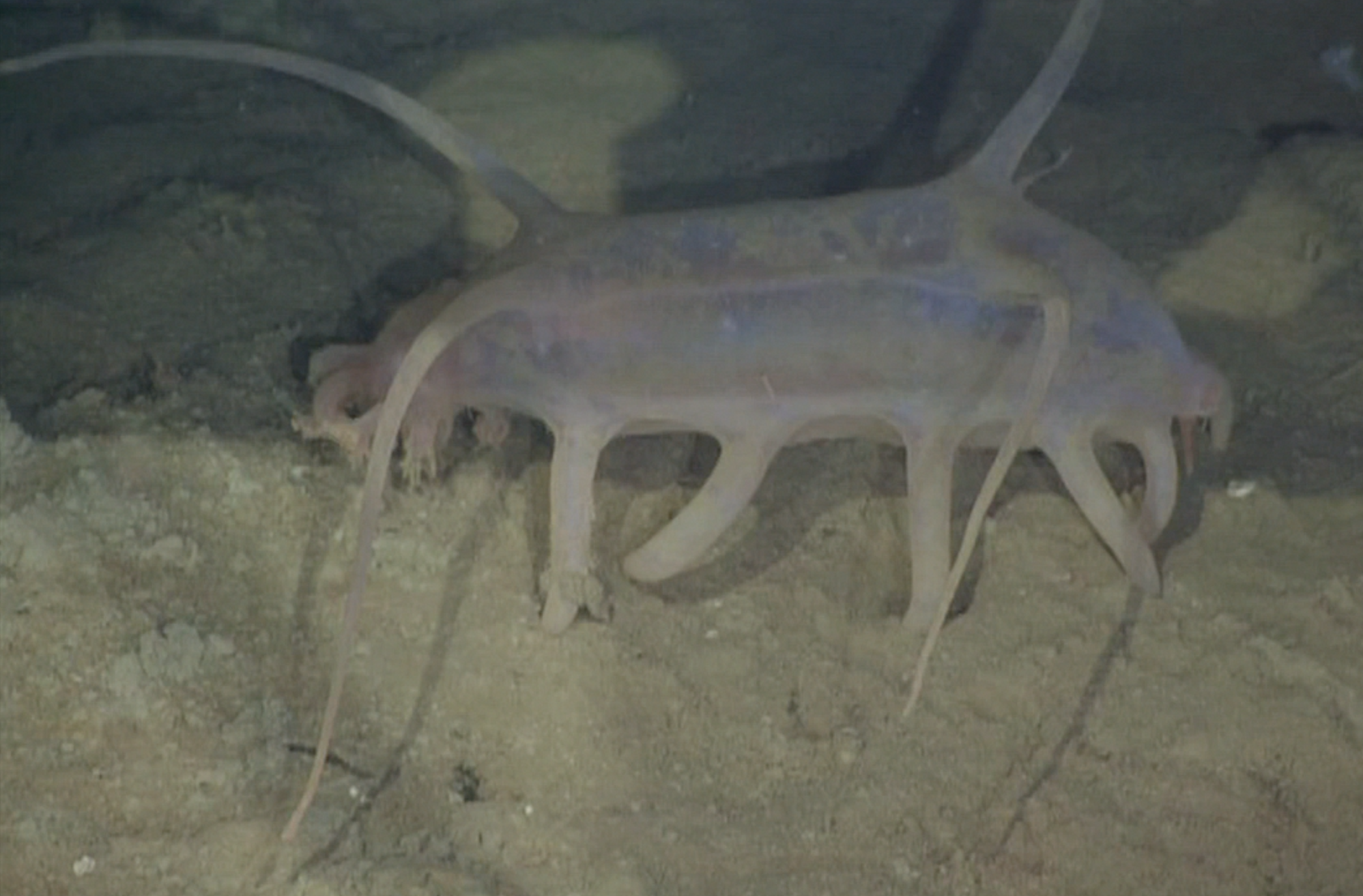
Sea pig are usually 4-6 inches long. They are distributed throughout the abyssal plain of the deep ocean, residing in all of the major ocean basins. They are actually a species of sea cucumber, one of the few that uses legged locomotion. Their leg-like appendages are known as tube feet, the same projections that sea stars have. They use a water vascular system to inflate and deflate these appendages and move around the ocean floor. These organisms are deposit feeders, searching through the sediment for bits of organic material that have settled from above. Often times, multitudes of specimens can be found pointing in the same direction, oriented upstream to detect possible food sources. Although they look similar to the Peniagone genus, they are actually a different taxonomic group, and can most easily be distinguished by the two pairs of antennae-like appendages that can be found on both sides of its body, as opposed to the single pair found in Peniagone.
References:
Hansen, B. (1972). "Photographic evidence of a unique type of walking in deep-sea holothurians". Deep Sea Research and Oceanographic Abstracts 19 (6): 461–462.
http://eol.org/pages/599675/overview
Paelopadites Sea Cucumber (Paelopadites confundens)
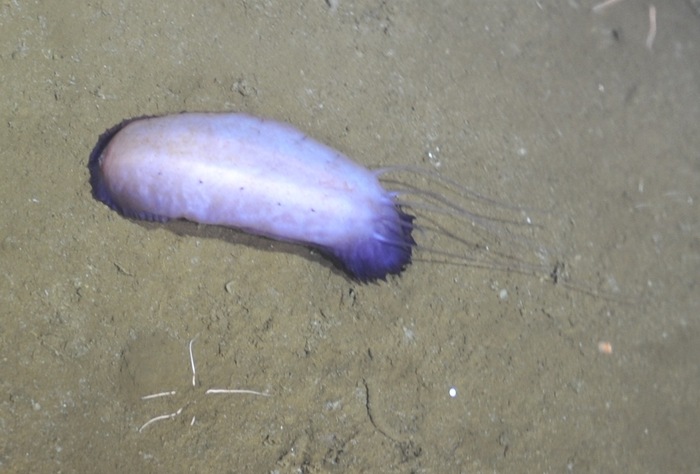 This species was observed at the base of Axial. Its purple hue gave VISIONS scientists the idea to nickname it a Sea Eggplant, since it inhabits the same area as other sea cucumbers.
This species was observed at the base of Axial. Its purple hue gave VISIONS scientists the idea to nickname it a Sea Eggplant, since it inhabits the same area as other sea cucumbers.
References:
http://www.mbari.org/benthic/holothurians.html
Unknown Sea Cucumber 1
 This large, clear sea cucumber dwells in the same habitat as the Peniagone Sea cucumbers, and may be a relative. It is also very similar to the group of sea cucumbers referred to as Sea Pigs (Scotoplane sp.), however, this specimen, and another nearby lacked the two sets of antennae-like features that characterize Sea Pigs.
This large, clear sea cucumber dwells in the same habitat as the Peniagone Sea cucumbers, and may be a relative. It is also very similar to the group of sea cucumbers referred to as Sea Pigs (Scotoplane sp.), however, this specimen, and another nearby lacked the two sets of antennae-like features that characterize Sea Pigs.
Unknown Sea Cucumber 2
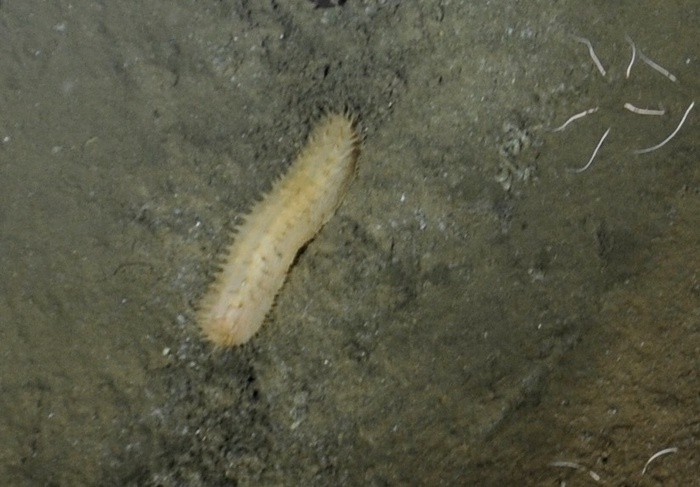 This species was observed in sediments at the base of Axial Seamount. It may be related to The Deep Sea Cucumber (Pannychia moseleyi).
This species was observed in sediments at the base of Axial Seamount. It may be related to The Deep Sea Cucumber (Pannychia moseleyi).

